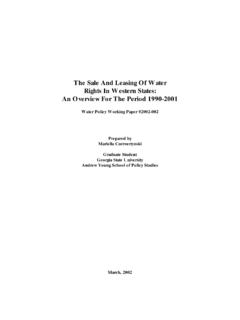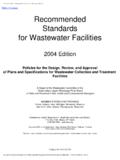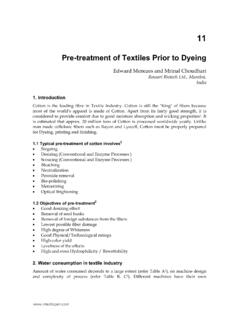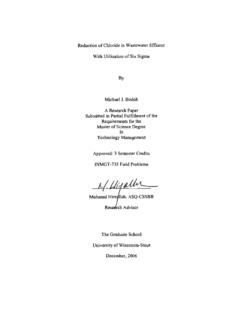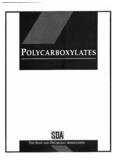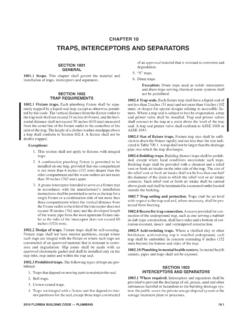Transcription of Estimation Of Costs Of Phosphorus Removal In Wastewater ...
1 1 Estimation Of Costs Of Phosphorus Removal In Wastewater treatment facilities : construction De Novo Water Policy Working Paper #2004-010 By: F. Jiang, Beck, Cummings, K. Rowles, and D. Russell* June 2004 * Jiang and Beck are affiliated with the University of Georgia, Athens; Rowles and Cummings are with GSU s Andrew Young School of Policy Studies; Russell is affiliated with Global Environmental Operations, The authors wish to express their appreciation for financial support received from the Georgia Research Alliance, the Georgia Soil and Water Conservation Commission (480-04-GSU1001), and the Department of Agriculture (2003-38869-02007).
2 2 Estimation Of Costs Of Phosphorus Removal In Wastewater treatment facilities : construction De Novo Abstract With the increase in interest on the part of the EPA in the use of market mechanisms (such as offset banking) as a cost-efficient means by which water pollution might be managed, there has been a growing realization that there is a considerable gap in the state of the art of our understanding of Costs associated with one of the major beneficiaries from such programs: waste treatment plants. To our knowledge, there exists no comprehensive study of Costs incurred by such plants for meeting alternative pollution standards, and this is particularly the case with Phosphorus .
3 It is these Costs , of course, that are basic to any considerations related to possible gains that might obtain from Phosphorus reductions at other sites that might serve as a bank from which the treatment plant acquires credits for increases in the concentration of Phosphorus in discharges to water courses. This study sets out eight designs of Wastewater treatment facilities covering a wide range of Phosphorus Removal . Generally, there are two approaches to the problem of estimating the Costs of Phosphorus Removal : through entirely new facilities , constructed de novo, essentially on Greenfield sites, and through the adaptation of existing facilities . The present study focuses on the former method.
4 The second method will be the topic of a later study. Capital, operation/maintenance, and total Costs for the construction and operation of plants removing between 20% and of Phosphorus with capacities ranging between 1 and 100 million gallons per day are developed. Results are subject to some site-specific variability, since land prices are obviously site specific. However, where there may be significant disagreement about the estimates of Costs and the feasibility of suggested process designs, the view taken here is that such uncertainty will simply have to be taken into account in any future studies based on the tentative results reported herein. 3 Estimation OF Costs OF Phosphorus Removal IN Wastewater treatment facilities : construction DE NOVO 1.
5 INTRODUCTION The discharge of Phosphorus to surface waters causes accelerated eutrophication of lakes, reservoirs, and ponds. That discharged in municipal and industrial Wastewater has been identified as one of the principal sources of Phosphorus readily available for uptake by aquatic micro-organisms (algae). Since the 1970s Phosphorus has been identified as the most important rate-limiting factor for algal growth in freshwater systems, and its Removal from these wastewaters has therefore become increasingly important. It is apparent that greater attention will be focused on the control of Phosphorus in rivers, lakes and impoundments in the near future.
6 It is just as apparent that the Environmental Protection Agency (EPA) has a keen interest in exploring whether such control can be implemented by market mechanisms. The present study is motivated, therefore, by the prospect of lowering the discharge of nutrients from both point and nonpoint sources using an offset banking scheme for pollutant trading between, in particular, the two kinds of sources (Cummings et al, 2003). However, in order to explore such a trading mechanism it is necessary to have appropriately developed cost relationships, in this instance, specifically for the Costs of building and operating point-source Wastewater treatment facilities for removing Phosphorus at various levels (indeed, ideally along the continuum from 0% through 100% Removal ).
7 Estimating these cost relationships is the focus of the present report. Several unit processes have been developed for elimination of Phosphorus . These include biological nutrient Removal (BNR) (Lee et al, 1997), enhanced biological Phosphorus Removal (EBPR) (Smolders et al, 1996; Wild et al, 1996), the modified Renphosystem (Rensink et al, 1997), crystallization (Van Dijk et al, 1984; Battistoni et al, 1997; Joko, 1984; Momberg et al, 1992; Munch et al, 2001), and activated aluminum adsorption (Donnert et al, 1999; Bratteb et al, 1986; Hano et al, 1997). Section 2 sets out eight designs of Wastewater treatment facilities covering the required range of rates of Phosphorus Removal .
8 We treat these eight configurations as our reference designs for this study. Generally there are two approaches to the problem of estimating the cost of Phosphorus Removal : (i) through entirely new facilities , constructed de 4novo, essentially on greenfield sites ; and (ii) through the adaptation of existing facilities , , through modifications intended to provide a higher level of treatment for Phosphorus Removal . The former is the focus of this report whereas the latter, which may be the more relevant in most situations, will be the subject of a subsequent report. The various estimated Costs (capital, operating, total annual economic Costs ) of the system designs of Section 2 are presented in Section 3.
9 These results are derived from procedures and data drawn from a combination of a 1980 EPA cost study (USEPA, 1980), various private sources, and other public reports (USEPA, 1971; USEPA, 1979; USEPA, 1987; USEPA, 1998). Details of the Estimation procedures are provided in the Appendices to the present report. Our results will be subject to some site-specific variability, since land prices are obviously site specific. However, where there may be significant disagreement about the estimates of Costs and the feasibility of suggested process designs, the view is taken that such uncertainty will simply have to be taken into account in any further studies based on the results of the present report.
10 It would be na ve to suppose that there is no uncertainty in the estimates of Costs and unnecessary, since we routinely deal with uncertainty in both the science base and aspirations of stakeholders in watershed management more generally (Beck et al, 2002; Osidele et al, 2003). Estimates for capital, O&M, and total Costs are developed in section III. Concluding remarks are offered in section IV. 2. PROCESS DESCRIPTIONS Phosphorus Removal from Wastewater effluents can be achieved in two fundamentally different ways: by physical-chemical precipitation and by enhanced biological Removal (although both, in essence, entail the creation of particulate matter that can be separated from the water).
